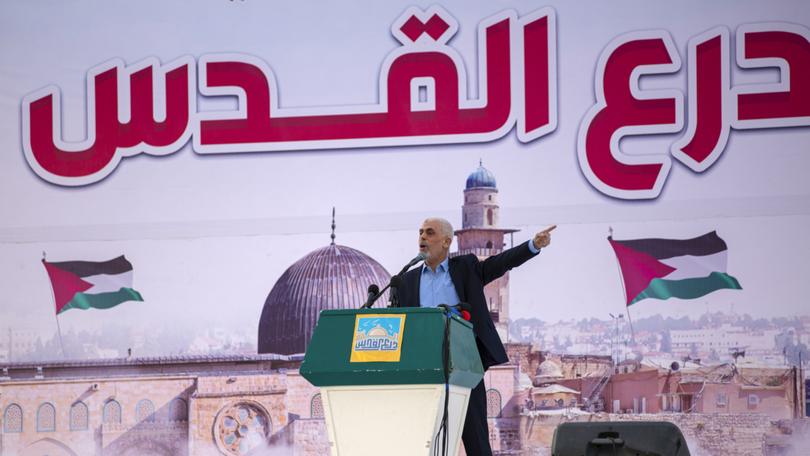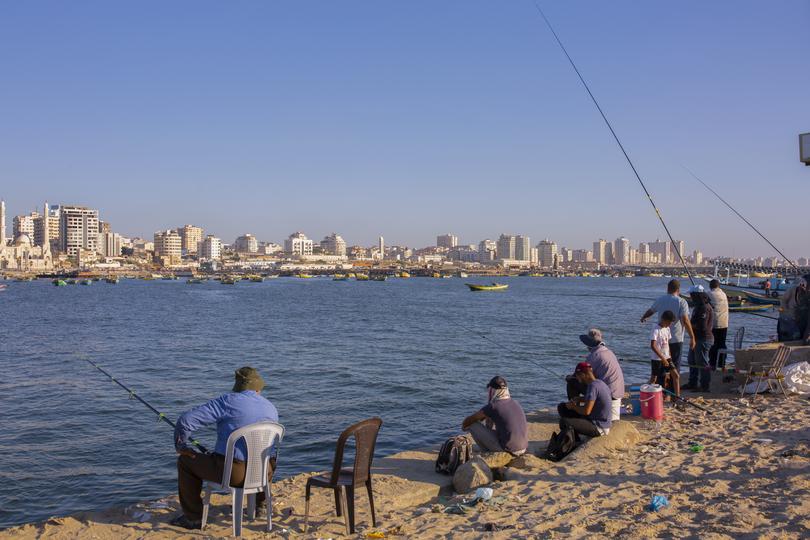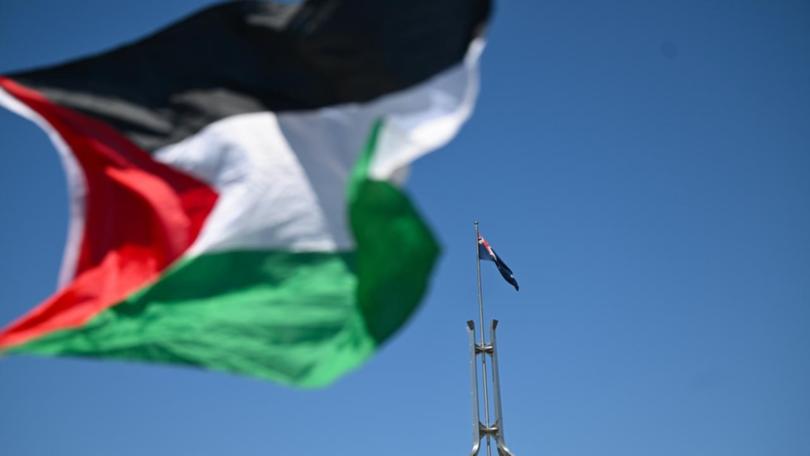The New York Times: Secret Hamas files show how it spied on everyday Palestinians

JERUSALEM — Hamas leader Yehia Sinwar has for years overseen a secret police force in the Gaza Strip that conducted surveillance on everyday Palestinians and built files on young people, journalists and those who questioned the government, according to intelligence officials and a trove of internal documents reviewed by The New York Times.
The unit, known as the General Security Service, relied on a network of Gaza informants, some of whom reported their own neighbours to the police. People landed in security files for attending protests or publicly criticizing Hamas. In some cases, the records suggest that authorities followed people to determine if they were carrying on romantic relationships outside of marriage.
Hamas has long run an oppressive system of governance in Gaza, and many Palestinians there know that security officials watch them closely. But a 62-slide presentation on the activities of the General Security Service, delivered only weeks before the Oct. 7 attack on Israel, reveals the degree to which the largely unknown unit penetrated the lives of Palestinians.
Sign up to The Nightly's newsletters.
Get the first look at the digital newspaper, curated daily stories and breaking headlines delivered to your inbox.
By continuing you agree to our Terms and Privacy Policy.The documents show that Hamas leaders, despite claiming to represent the people of Gaza, would not tolerate even a whiff of dissent. Security officials trailed journalists and people they suspected of immoral behaviour. Agents got criticism removed from social media and discussed ways to defame political adversaries. Political protests were viewed as threats to be undermined.
Every day residents of Gaza were stuck — behind the wall of Israel’s crippling blockade and under the thumb and constant watch of a security force. That dilemma continues today, with the added threat of Israeli ground troops and airstrikes.
“We’re facing bombardment by the occupation and thuggery by the local authorities,” Ehab Fasfous, a journalist in Gaza who appeared in the files of the General Security Service, said in a phone interview from Gaza.
Fasfous, 51, is labelled in one report as among “the major haters of the Hamas movement.”

The documents were provided to the Times by officials in Israel’s military intelligence directorate, who said they had been seized in raids in Gaza.
Reporters then interviewed people who were named in the files. Those people recounted key events, confirmed biographical information and, in Fasfous’s case, described interactions with authorities that aligned with the secret files. The documents reviewed by the Times include seven intelligence files ranging from October 2016 to August 2023. The military intelligence directorate said it was aware of files containing information on at least 10,000 Palestinians in Gaza.
The General Security Service is formally part of the Hamas political party but functions like part of the government. One Palestinian individual familiar with the inner workings of Hamas, who spoke on the condition of anonymity because of the sensitivity of the matter, confirmed that the service was one of three powerful internal security bodies in Gaza. The others were Military Intelligence, which typically focuses on Israel, and the Internal Security Service, an arm of the Interior Ministry.
Basem Naim, a spokesperson for Hamas, said the people responsible for the General Security Service were unreachable during the war.
With monthly expenses of $120,000 before the war with Israel, the unit comprised 856 people, records show. Of those, more than 160 were paid to spread Hamas propaganda and launch online attacks against opponents at home and abroad. The status of the unit today is unknown because Israel has dealt a significant blow to Hamas’ military and governing abilities.
Israeli intelligence authorities believe Sinwar directly oversaw the General Security Service, according to three Israeli intelligence officials, who spoke on the condition of anonymity because they were not authorized to discuss the matter publicly. They said the slideshow was prepared for Sinwar personally, though they did not say how they knew that.
The presentation said the General Security Service works to protect Hamas’ people, property and information, and to support its leadership’s decision-making.
Some slides focused on the personal security of Hamas leaders. Others discussed ways to stamp out protests, including the “We Want to Live” demonstrations last year that criticized power shortages and the cost of living. Security officials also tracked operatives from Palestinian Islamic Jihad, an ideologically aligned militant group that often partners with Hamas.
Some tactics, like amplifying Hamas’ own message, appeared to be routine politicking. In other instances, officials suggested using intelligence to undermine opponents and distort their reputations, though the files were vague about how that was to be done.
“Undertaking a number of offensive and defensive media campaigns to confuse and influence adversaries by using private and exclusive information,” the document read.
Security officers stopped Fasfous on his way to a protest in August, seized his phone and ordered him to leave, a report says. Fasfous confirmed that two plainclothes officers had approached him. Authorities searched his recent calls, and wrote that he was communicating with “suspicious people” in Israel.
“We advise that closing in on him is necessary because he’s a negative person who is full of hatred, and only brings forth the Strip’s shortcomings,” the document said.
The most frustrating thing, Fasfous said, was that the officers used his phone to send flirtatious messages to a colleague. “They wanted to pin a moral violation on me,” he said.
The report does not include that detail but does describe ways to “deal with” Fasfous. “Defame him,” the report said.
“If you’re not with them, you become an atheist, an infidel and a sinner,” Fasfous said. He acknowledged supporting protests and criticizing Hamas online but said the people he was in touch with in Israel were Palestinians who owned food and clothing companies. He said he helped run their social media accounts.
The General Security Service’s goals are similar to those of security services in countries such as Syria that have used secret units to quell dissent. The files of the General Security Service, though, mention tactics like censorship, intimidation and surveillance rather than physical violence.
“This General Security Service is just like the Stasi of East Germany,” said Michael Milshtein, a former Israeli military intelligence officer specializing in Palestinian affairs. “You always have an eye on the street.”
Palestinians in Gaza live in fear and hesitate to express dissent, analysts said.
“There are a lot of people practising self-censorship,” said Mkhaimar Abusada, a professor of political science from Gaza City. “They just don’t want problems with the Hamas government.”
That view clashes with the most strident comments of Israel’s leaders, like President Isaac Herzog, who blamed Palestinians in Gaza for not toppling Hamas before the Oct. 7 attacks.
“There’s an entire nation that is responsible,” he said. “This rhetoric about civilians were not aware, not involved, it’s absolutely not true. They could have risen up.”
The General Security Service, the files show, also tried to enforce a conservative social order.
In December 2017, for example, authorities investigated a tip that a woman was acting immorally with a man who owned a clothing shop. A security report noted that she visited the shop for an hour on one day, then more than two hours the next. The report presented no evidence of wrongdoing but proposed that “relevant parties” address the matter.

An October 2016 report described young men and women performing unspecified “immoral acts” at a Palestine Liberation Organization office in Khan Younis at night. Hamas sees the Palestine Liberation Organization as a compromised entity, whose leader too often favours Israeli interests. The report offered no evidence of misdeeds but recommended summoning a man who claimed to be in possession of videos and pictures.
The files also show that Hamas was suspicious of foreign organizations and journalists.
When Monique van Hoogstraten, a Dutch reporter, visited a protest encampment along the border with Israel in April 2018, authorities noted the most banal of details. They noted the make and model of her car and her license plate number. They said she took pictures of children and tried to interview an elderly woman. Van Hoogstraten confirmed the reporting trip in an interview with the Times.
The file recommended further “reconnaissance” of journalists.
None of the files reviewed by the Times were dated after the start of the war. But Fasfous said the government remained interested in him.
Early in the war, he said he took images of security forces hitting people who fought over spots in line outside a bakery. Authorities confiscated his camera.
Fasfous complained to a government official in Khan Younis, who told him to stop reporting and “destabilizing the internal front,” Fasfous recalled.
“I told him I was reporting on the truth and that the truth won’t hurt him, but that fell on deaf ears,” he said. “We can’t have a life here as long as these criminals remain in control.”
This article originally appeared in The New York Times.
© 2024 The New York Times Company
Originally published on The New York Times
